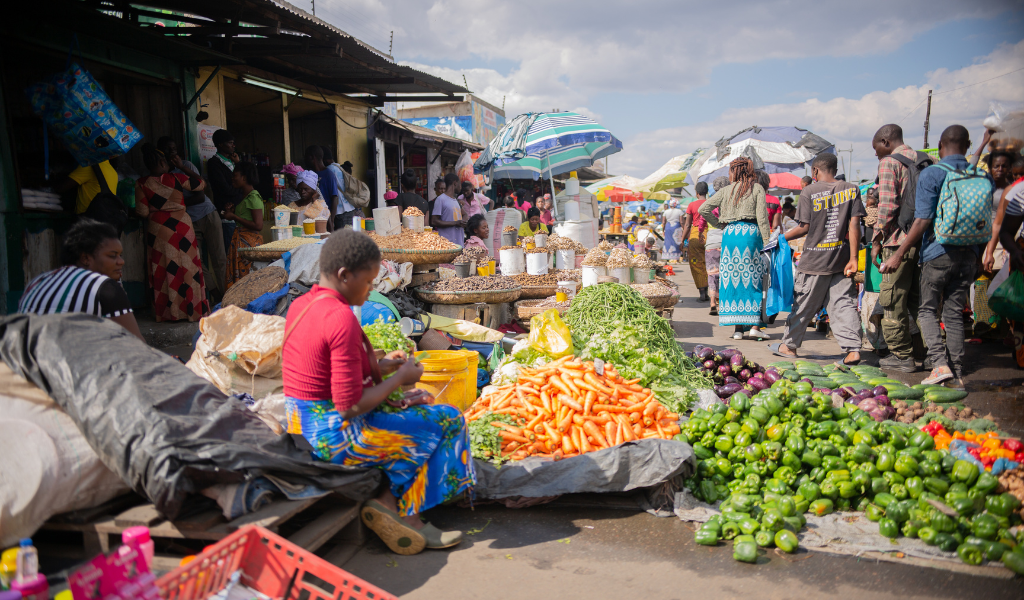Child undernutrition is one of the world’s most stubborn development failures—silent, invisible, and yet devastatingly widespread. Despite rising investments in social protection, the ‘nutrition yield’ of these programmes often remains unrealised — a missed opportunity hiding in plain sight. But Zambia is showing us how things can be done differently.

In four diverse districts across Zambia, the 1,000 Days in Social Cash Transfer (SCT) Pilot was implemented to test a bold proposition: that cash transfers can contribute to broader developmental outcomes beyond poverty relief. This programme was co-led by the Ministry of Community Development and Social Services (MCDSS) and UNICEF Zambia built on the country’s well-established national SCT programme By layering cash with community-based care, health, nutrition and water, sanitation, and hygiene (WASH) services and by focusing on the critical window from pregnancy to a child’s second birthday, the pilot set out to demonstrate that social protection can actively improve nutrition outcomes and advance gender equality.
Reaching more than 12,500 pregnant women and mothers of children under two across Chipata, Kalabo, Mpika, and Mwinilunga, Zambia’s 1,000 Days SCT Pilot was rooted in a community-led, multisectoral approach. A research team from the Institute of Development Studies (IDS) and the University of Zambia embedded rigorous evaluation and implementation research to generate actionable, policy-ready evidence—not only for Zambia, but for the growing global movement around nutrition-sensitive social protection.
In this blog, we explore the pilot’s standout achievements, examine what made it work (and what held it back), and offer six concrete lessons for designing integrated social assistance that delivers real gains for nutrition.
What worked? Real gains in diet and food security
The results from Zambia’s 1,000 Days SCT Pilot speak for themselves. Women’s dietary diversity increased by 18 percentage points, and children consumed nearly one extra food group on average—a meaningful shift in settings where undernutrition is widespread. For families navigating repeated climate shocks, the programme delivered more than just nutrition: it cut severe food insecurity by 16 percentage points, especially in rural areas.
Importantly, these weren’t simply gains from handing out cash. Many households used part of the transfer to invest in staple food stocks or start/further grew small businesses—showing that when financial support is bundled with community support and tailored messaging, it can trigger powerful, self-reinforcing outcomes.
Why It worked: Community volunteers and behaviour change
At the heart of the pilot’s success were Community Welfare Assistance Committees (CWACs)—volunteer groups embedded in Zambia’s social welfare system, under the MCDSS. These local actors helped households navigate referrals to local health, nutrition and other services and delivered key health and nutrition messages through home visits and cash collection points. They also reinforced behavioural nudges around child feeding, budgeting, and saving.
Their consistent engagement helped translate cash into nutrition, especially where formal services were weak or distant. These findings also echo insights from our wider systematic scoping review of behaviour change communication in social assistance.
Cautionary notes: Referrals, messaging, and missed links
Not everything worked as planned. While exclusive breastfeeding showed tentative gains, continued breastfeeding dropped possibly due to confusion around complementary feeding—suggesting the need for age-specific messages and better-aligned advice.
Only 43 percent of pilot households received tailored needs assessments, and many never got referred to complementary local services. With CWACs already overstretched and often severely under resourced, this highlighted a recurring challenge: ‘soft’ components like behaviour change messaging, referral pathways, and case management are often underfunded—even though they’re critical to sustainable outcomes.
Equity, ethics, and women’s agency
Despite good acceptability of the pilot overall, the selection process sparked frustration among non-beneficiaries, especially in rural areas where poverty was very widespread. In highly impoverished communities, leaving some poor families out, without transparent communication, can easily undermined community trust. Ethical concerns also emerged: for example, public verification processes involving pregnancy disclosure raised questions about privacy and dignity.
Yet encouragingly, women retained primary control over how the money was spent, and reports of intra-household conflict were minimal. This reinforces the argument that cash transfers, when delivered with care and communication, can enhance—not threaten—women’s agency.
Framing the bigger picture: A systems approach to nutrition-sensitive social protection
Zambia’s pilot is more than a one-off success story. It reflects growing recognition of a missed opportunity: the potential of social protection systems as a lever for progress on child malnutrition and gender equality at scale. To unlock its potential, we need integrated, life-stage focused systems that target nutritionally vulnerable groups at critical moments, like pregnancy and early childhood. They should actively leverage complementarities with health, nutrition and WASH services and strengthen local capacity and dignity-centred delivery while critically embedding behaviour change and local participation into routine delivery.
Six policy priorities for governments and partners
Zambia’s 1,000 Days pilot offers an evidence-based path forward. To go from pilot to policy, consider these priorities:
- Start early. Target support from early pregnancy to cover the full 1,000-day window.
- Back community volunteers. Train and equip CWACs and build strong partnerships with Nutrition Support Group (NSG) volunteers for a truly multisectoral approach.
- Explore hybrid payment models (e.g. mobile + in-person) while retaining behaviour-change touchpoints.
- Invest in the ‘soft stuff’. Case management, referral systems, and participatory messaging are not add-ons—they are essential.
- Index transfers to real food costs. In a time of global food price volatility, static cash values quickly lose their purchasing power. Regularly review and adjust transfer amounts to ensure families can still afford a minimum nutritious diet—especially during lean seasons or economic shocks
- Design for dignity. Ethical targeting, communication, privacy protections, and grievance redress are foundational for community trust and engagement.
